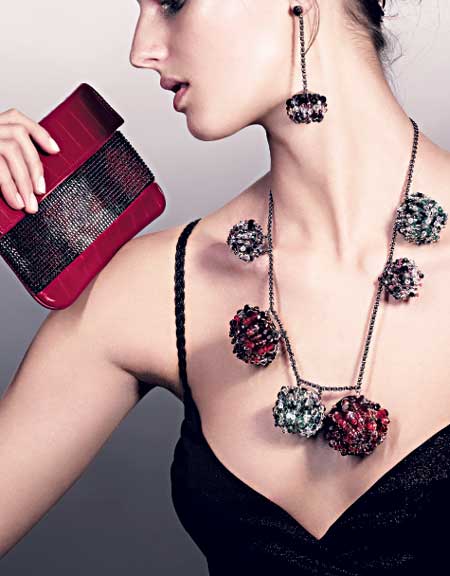When Daniel Swarovski invented an automatic
cutting machine at the end of the 19th century, he made possible a fashion
accessory that would transform what women wear: crystal.
Crystal, as a raw material, has always been seen as valuable and beneficial.
But after Swarovski created his machine, the material entered the world of
fashion and beauty.

Over time, with its innovation, trend research and creative
products, Swarovski's brand logo has become the symbol of crystal, and moreover,
a mainstay in jewellery across the world.
Today, this Austrian name no longer belongs to Western fashionistas only. It
is rapidly attracting Chinese mainland customers.
The crystal business here has maintained 60-per-cent growth every year since
it entered the country in 1998, a rate of expansion that has already overtaken
Japan and Hong Kong.
As for Swarovski's sales, the brand had 85 outlets in China by the middle of
last month, and by year's end will boast 90 points of sale in over 30 cities,
says Allison Pyrah, greater China director of Swarovski's consumer goods
business.
"We have taken the correct strategy to enter the market," Pyrah says. "We
established ourselves as an affordable luxury brand."
From a 300 yuan (US$37.5) mobile phone accessory to a 30,000 yuan (US$3,760)
necklace, Swarovski has a broad price range.
"We are not the top-end brand," Pryah says. "In our shops, customers can
always find something they can afford."
She adds that for top-end brands, such as Hermes and Louis Vuitton, many
customers go into their shops to look, but only a small percentage of people buy
their products. That goes against some research statistics, whcih show Chinese
consumers offen buy luxury brands.
She stresses that Swarovski is an upper-middle class brand. "We are not for
elites. We are not diamond. We are crystal. So, we can reach more people."
(For more biz stories, please visit Industry Updates)